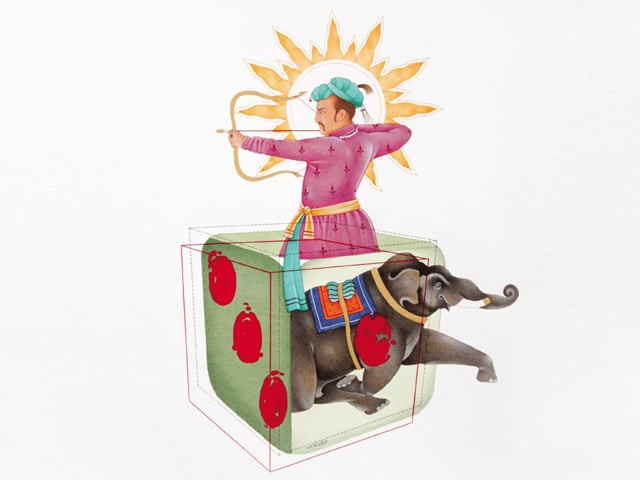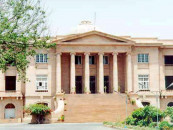Big questions for a small art form
Miniature art was the Mughals’ preferred art form. Today, it has evolved into a number of branches.

Asif Ahmed addressed this question in his exhibition ‘From the same story’ launched at the Chawkandi Art Gallery on Tuesday, February 8. The artist graduated from the National College of Arts in 2004, and discovered his love for miniature painting during his time there.
“Traditional art itself is the most important subject of discussion in my work,” states Ahmed in his statement. “The connection between the images is a means to question traditional art values and practices and their role in the contemporary art world today.”
The artist uses the conventional wasli, a four-layered, hand-made paper. He also utilises a combination of Windsor and Newton paint brushes, the single haired brushes custom-made for hair and eyes, and a fine qalam (pen) to add detail.
Ahmed was also particularly concerned with the “exploitation of traditional art in the modern world”. Crossword puzzles, dice, mousetraps and other symbols of ambiguity are seen juxtaposed with images of Mughal rajas. In his series of paintings titled ‘Lets play a game’, one can see warriors and archers on a die.
“I have borrowed traditional icons from historical miniature paintings,” he volunteered, “overlapped with different images from different times.”
Ahmed’s paintings, though created using miniature techniques, are about 19 by 20 inches on average - colossal compared to the usual three-inch wide masterpieces. “Even the size of my work is questionable,” Ahmed told The Express Tribune. “It is another argument - is miniature art defined by the size, the images, or the technique?”
‘My favourite piece is the one with the skull,” he said in reply to a question. “The skull gives it an image of death, and there is a faint contour of a Mughal head. It’s meant to look like an x-ray, the ones used in medical diagnosis, because the whole point of the exhibition is to take a good look into the argument that miniature art has changed.”
Published in The Express Tribune, February 9th, 2011.



















COMMENTS
Comments are moderated and generally will be posted if they are on-topic and not abusive.
For more information, please see our Comments FAQ